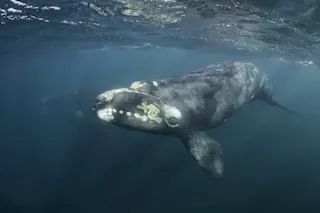Right whales were hunted to extinction in the Mediterranean. New evidence indicates even the Romans may have hunted whales on a commercial scale. (Credit: wildestanimal/shutterstock) In the second century, the Greco-Roman writer Oppian described men in rowboats thrusting harpoons into a “sea monster,” which is then roped and towed to shore. At the time, the Romans had a successful fishing industry in the Strait of Gibraltar, the western waterway to the Mediterranean world. Historians sometimes say Roman fishing at this bottleneck included whaling, but other than Oppian’s poem and other indirect clues, there was no evidence. A paper published Wednesday in The Royal Society Journal suggests coastal whales lived in great numbers in the strait during Roman times. The authors speculate that a commercial whaling operation may have existed. Though other cultures harvested whales before Roman times (whaling goes back 5,000 years), none of them turned it into an industry. ...
Romans Might Have Been First Commercial Whalers
Explore the evidence of the Roman whaling industry, revealing potential commercial operations in ancient Mediterranean waters.
More on Discover
Stay Curious
SubscribeTo The Magazine
Save up to 40% off the cover price when you subscribe to Discover magazine.
Subscribe













